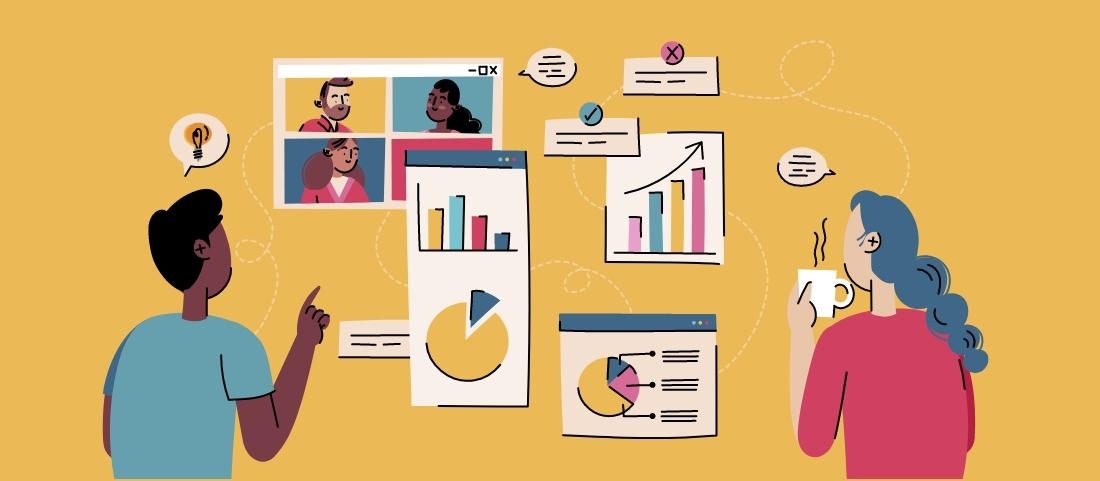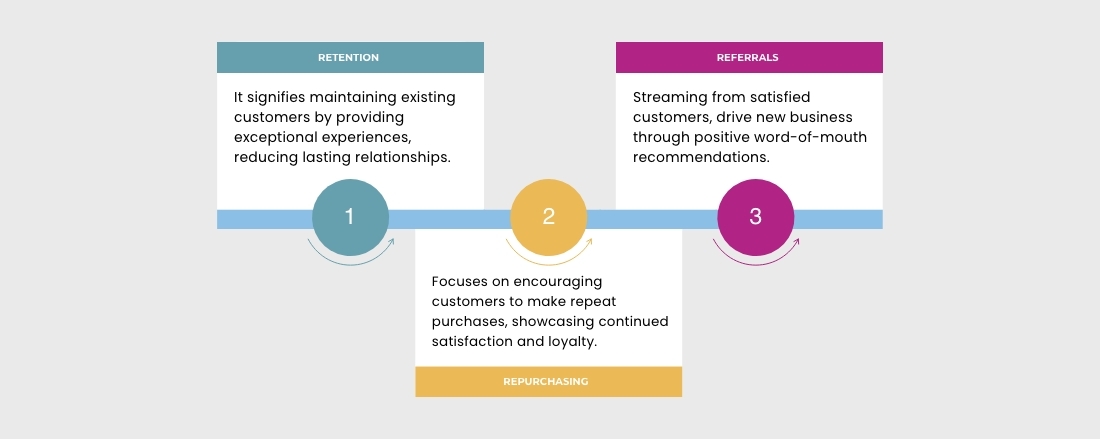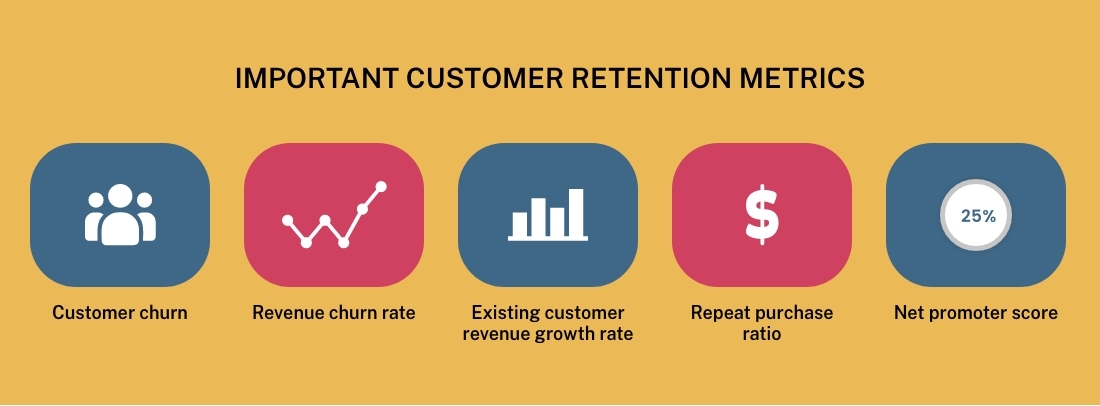Insights that matter: Maximizing customer lifetime value with retention analytics
Published March 01, 2024. 1 min read
Customer retention analytics is a strategic approach to analyzing customer data and behavior to proactively identify, understand, and address factors influencing customer retention. It involves the systematic collection, processing, and analysis of data related to customer interactions, transactions, preferences, and feedback. By leveraging advanced analytical techniques such as segmentation, predictive modeling, and sentiment analysis, businesses can gain actionable insights into customer loyalty, churn propensity, and satisfaction levels. Customer retention analytics enables businesses to predict and prevent churn, personalize retention strategies, optimize customer experiences, and ultimately foster long-term relationships with their clientele. It serves as a cornerstone of data-driven decision-making, empowering businesses to allocate resources effectively, prioritize initiatives, and continuously improve customer engagement and retention efforts.
The 3 R's of customer loyalty

The "3 R's of customer loyalty" encapsulate the core elements of retaining customers, encouraging repurchasing behavior, and fostering referrals. These metrics serve as fundamental indicators of customer satisfaction, engagement, and advocacy, ultimately contributing to long-term business success.
- Retention: focuses on keeping existing customers engaged and satisfied to prevent them from switching to competitors. A high retention rate signifies strong customer loyalty and a healthy relationship between the customer and the brand. For example, a subscription-based service like Spotify ensures retention by offering personalized playlists, exclusive content, and seamless user experiences, thereby keeping subscribers engaged and less likely to cancel their subscriptions.
- Repurchasing: refers to the frequency with which customers make repeat purchases from a business. It reflects the level of satisfaction with the product or service and the likelihood of customers to continue patronizing the brand over time. For instance, a consumer electronics company like Apple cultivates repurchasing behavior through product quality, innovation, and customer service, prompting customers to upgrade to the latest iPhone model or purchase accessories like AirPods.
- Referrals: involve customers recommending a business or its products/services to others, thereby driving new customer acquisition and expanding the customer base. Positive word-of-mouth referrals are a powerful endorsement of the brand's value proposition and can significantly impact brand perception and credibility. For example, a food delivery service like DoorDash incentivizes referrals by offering discounts or credits to both the referrer and the referred customer, encouraging existing users to share their positive experiences with friends and family.
Understanding the significance of customer retention analytics
In the competitive landscape of modern business, customer retention analytics emerges as a strategic imperative with profound implications for long-term success.
- Cost-effectiveness: Acquiring new customers is undeniably expensive, requiring substantial investments in marketing, advertising, and outreach efforts. On the other hand, retaining existing customers proves to be a more cost-effective strategy. By focusing on retaining customers, businesses can allocate resources more efficiently and achieve a higher return on investment.
- Revenue stability: Retained customers form the bedrock of a stable revenue stream. Unlike one-time purchasers or sporadic customers, retained customers exhibit consistent purchasing behavior over time. This predictable revenue stream provides stability amidst market fluctuations and economic uncertainties, enabling businesses to weather challenging times more effectively.
- Brand advocacy: Loyal customers are not just passive consumers; they're enthusiastic advocates for your brand. They're more likely to recommend your products or services to friends, family, and colleagues, thereby amplifying your brand's reach and influence. Harnessing the power of brand advocacy can lead to exponential growth as satisfied customers become brand ambassadors, fueling organic word-of-mouth marketing.
Key metrics for measuring customer loyalty

Customer loyalty is a multifaceted concept that can be quantified through various metrics and key performance indicators (KPIs).
- Churn Rate: The churn rate is perhaps one of the most critical metrics for measuring customer loyalty. It represents the percentage of customers who discontinue their relationship with your brand over a specific period. A high churn rate indicates dissatisfaction or disengagement among your customer base, highlighting areas for improvement in your retention strategies.
- Customer Lifetime Value (CLV): CLV estimates the total value a customer is expected to generate for your business over the duration of their relationship. This metric takes into account factors such as purchase frequency, average order value, and retention period. Understanding CLV allows businesses to prioritize resources and focus on retaining high-value customers who contribute significantly to revenue generation.
- Net Promoter Score (NPS): NPS measures customer satisfaction and loyalty by asking customers a simple question: "How likely are you to recommend our product/service to a friend or colleague?" Customers are then categorized as promoters, passives, or detractors based on their responses. NPS provides valuable insights into overall customer sentiment and serves as a leading indicator of future growth and retention.
- Customer Satisfaction (CSAT): CSAT is a direct measure of customer contentment with your products or services. It typically involves surveying customers and asking them to rate their satisfaction on a numerical scale or provide qualitative feedback. Monitoring CSAT scores allows businesses to identify areas of improvement and take corrective actions to enhance the customer experience.
- Retention Rate: Retention rate quantifies the percentage of customers retained by your business over a specific period. It serves as a barometer of customer loyalty and the effectiveness of your retention efforts. A high retention rate indicates strong customer relationships and a healthy business ecosystem, whereas a declining retention rate may signal underlying issues that require attention.
- Repeat Purchase Rate: Repeat purchase rate measures the proportion of customers who make multiple purchases from your brand over time. It reflects the level of engagement and satisfaction among your customer base, as well as the effectiveness of your retention strategies. A high repeat purchase rate indicates a loyal customer base that continues to patronize your brand, driving sustained revenue growth.
Exploring analytical approaches to customer retention
Customer retention analytics encompasses a spectrum of analytical approaches, each offering unique insights into customer behavior and retention dynamics.
- Descriptive analytics: Descriptive analytics involves analyzing historical data to understand past trends and customer behaviors. By examining patterns and correlations in historical data, businesses can gain valuable insights into customer preferences, purchase patterns, and engagement trends. Descriptive analytics serves as the foundation for more advanced analytical techniques and strategic decision-making.
- Predictive analytics: Predictive analytics leverages statistical models and machine learning algorithms to forecast future outcomes and trends. By analyzing historical data and identifying patterns, predictive analytics enables businesses to anticipate customer behavior, including churn propensity, and take proactive measures to mitigate risks. Predictive analytics empowers businesses to make data-driven decisions and allocate resources more effectively, thereby optimizing customer retention strategies.
- Prescriptive analytics: Prescriptive analytics takes predictive insights a step further by recommending actionable strategies and interventions based on predictive models. By simulating various scenarios and outcomes, prescriptive analytics helps businesses identify the most effective courses of action to achieve desired objectives, such as reducing churn or increasing customer lifetime value. Prescriptive analytics enables businesses to optimize resource allocation, prioritize initiatives, and maximize the impact of retention efforts.
What is customer churn?
Customer churn is the phenomenon wherein customers cease their relationship with a business, often by discontinuing the use of its products or services. It serves as a crucial metric for assessing customer retention and overall business performance. Churn can occur for various reasons, including dissatisfaction with the product or service, better offerings from competitors, changes in personal circumstances, or lack of perceived value. Understanding and effectively managing customer churn is vital for businesses to sustain revenue growth, profitability, and market competitiveness.Churn can manifest differently across industries and business models. For subscription-based services like streaming platforms or software subscriptions, churn occurs when users cancel their subscriptions. Customer churn represents a loss of revenue and potential future business opportunities. Minimizing churn requires businesses to proactively identify factors contributing to customer attrition and implement targeted retention strategies. This may involve enhancing product or service quality, providing superior customer support, offering competitive pricing, or personalized incentives to re-engage at-risk customers. By effectively managing churn, businesses can foster long-term customer loyalty and drive sustainable growth.
Strategies for mitigating customer churn
Reducing churn requires a strategic approach grounded in data-driven insights and proactive interventions.

- Segmentation: Segmenting customers based on behavior, demographics, or psychographics allows businesses to target specific customer segments with tailored retention strategies. By understanding the unique needs, preferences, and behaviors of different customer segments, businesses can personalize their messaging, offers, and incentives to increase engagement and loyalty.
- Predictive modeling: Developing predictive models to identify at-risk customers and predict churn propensity enables businesses to intervene proactively and prevent customer defection. By leveraging historical data and predictive analytics techniques, businesses can identify early warning signs of churn and implement targeted retention initiatives, such as personalized offers, proactive outreach, or enhanced customer support.
- Feedback analysis: Analyzing customer feedback and sentiment data provides valuable insights into customer satisfaction, pain points, and areas for improvement. By collecting and analyzing feedback from various channels, including surveys, reviews, and social media, businesses can identify common themes, address customer concerns, and enhance the overall customer experience. Feedback analysis enables businesses to demonstrate responsiveness and empathy, fostering trust and loyalty among customers.
- Personalization: Personalizing offers, recommendations, and communications based on individual customer preferences and behaviors enhances relevance and engagement, driving loyalty and retention. By leveraging data and analytics to understand customer preferences, purchase history, and interaction patterns, businesses can deliver personalized experiences that resonate with customers and foster deeper connections. Personalization creates a sense of exclusivity and relevance, strengthening the bond between customers and brands.
- Continuous monitoring: Vigilantly monitoring key metrics and KPIs allows businesses to track the effectiveness of retention strategies and identify emerging trends or issues that require attention. By establishing regular reporting cadences and dashboards, businesses can monitor performance metrics in real-time and take prompt action to address deviations or anomalies. Continuous monitoring enables businesses to stay agile and responsive, adapting their retention strategies based on evolving customer needs and market dynamics.
Real-world examples of customer retention analytics in action
Customer retention analytics is not just a theoretical concept; it's a practical tool that delivers tangible results in real-world scenarios.
- Netflix: Netflix leverages predictive analytics to personalize content recommendations for its users, enhancing user engagement and reducing churn. By analyzing viewing history, preferences, and behavior patterns, Netflix's recommendation engine delivers tailored content suggestions that resonate with individual users, keeping them engaged and satisfied with the platform.
- Amazon: Amazon uses data analytics to power its recommendation engine, delivering personalized product recommendations to customers based on their browsing history, purchase behavior, and preferences. By leveraging machine learning algorithms and predictive analytics, Amazon identifies cross-selling and upselling opportunities, driving repeat purchases and increasing customer lifetime value.
- Airbnb: Airbnb employs feedback analysis to enhance its platform and improve the user experience for hosts and guests. By collecting and analyzing feedback from reviews, ratings, and surveys, Airbnb identifies areas for improvement, addresses customer concerns, and iteratively enhances the platform's usability and functionality. Feedback analysis helps Airbnb maintain high levels of customer satisfaction and retention, driving continued growth and success.
Conclusion: Charting a course for success
Customer retention analytics is a strategic imperative for businesses seeking to cultivate lasting relationships with their customers and drive sustainable growth in today's competitive landscape. By unraveling the essence of customer behavior, predicting churn risks, and implementing targeted retention strategies, businesses can unlock the full potential of their customer base and gain a competitive edge in the market.As technology advances and data analytics capabilities evolve, the strategic significance of customer retention analytics will continue to grow. By embracing data-driven insights and leveraging advanced analytics techniques, businesses can stay ahead of the curve and deliver exceptional customer experiences that drive loyalty, advocacy, and long-term success. Customer retention analytics is not just a tool; it's a pathway to sustainable growth and prosperity in the digital age.
IN THIS ARTICLE
- The 3 R's of customer loyalty
- Understanding the significance of customer retention analytics
- Key metrics for measuring customer loyalty
- Exploring analytical approaches to customer retention
- What is customer churn?
- Strategies for mitigating customer churn
- Real-world examples of customer retention analytics in action
- Conclusion: Charting a course for success
.png)